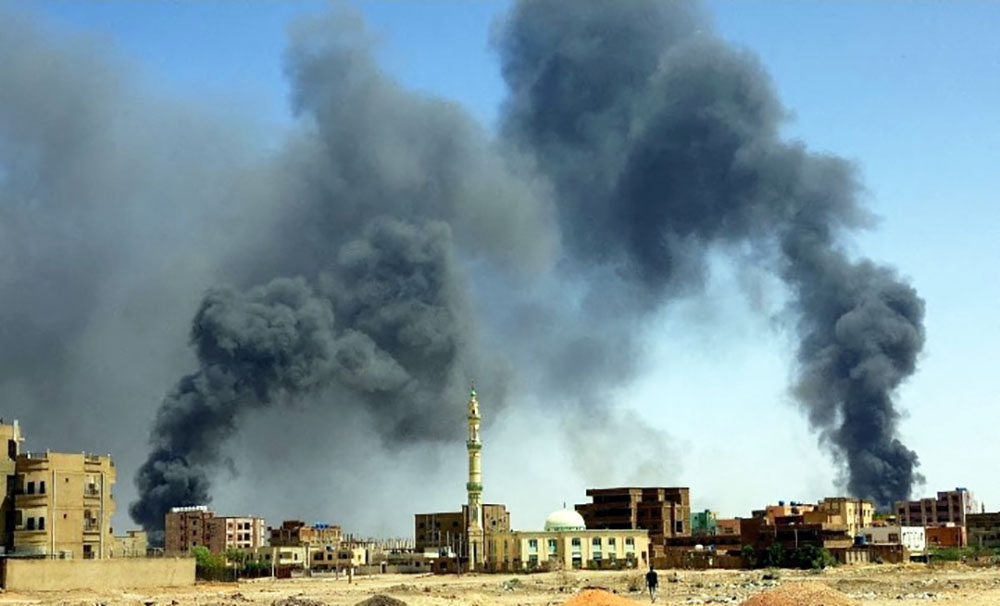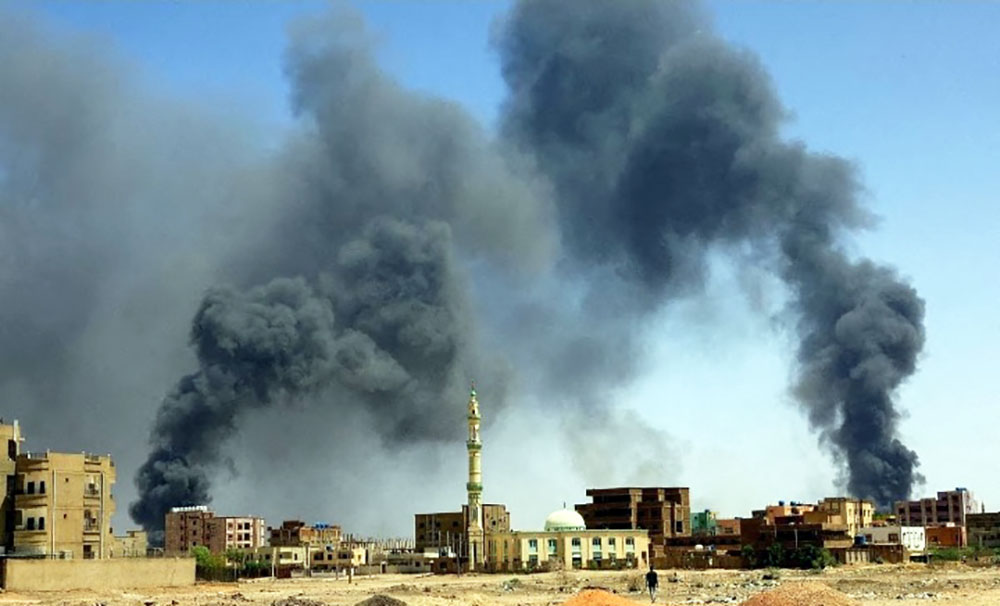
AOAV’s data briefing in the surge of armed violence in Sudan
Follow-up moatinoon
Sudan has witnessed a troubling increase in violence since April 2023, with explosive violence affecting civilians disproportionately. This Action on Armed Violence (AOAV) briefing note provides concerning data, as gleaned from English language media reporting of the violence there.
Since April, AOAV has recorded 90 reported incidents involving explosive weapons that have resulted in 1,606 civilian casualties, including 741 fatalities and 865 injuries.
This article dissects the numbers while also considering the broader political context to provide a comprehensive understanding of the current crisis.
Geographical and Sectoral Impact
High-risk Areas
Urban Residential Zones: Representing 66.7% of total explosive incidents reported, these are the most affected areas with 745 civilian casualties (46.4% of the total).
Markets: Even though they account for only 10% of explosive incidents reported, markets have witnessed 355 civilian casualties (22.1% of the total).
Police Stations: A single incident here led to 231 casualties, making up 14.4% of the total casualties as reported during explosive incidents reported.
Lower-impact Areas
Schools and transport infrastructure have been relatively less affected by explosive incidents reported, contributing just 0.7% and 0.4% to the total number of civilian casualties, respectively.
Types of Explosive Weapons
Ground-launched Explosives: They account for 61.1% of explosive incidents reported but are responsible for a disproportionate 72.8% of casualties (1,169 in total) from explosive weapons in Sudan.
Air-launched Weapons: Making up 28.9% of explosive incidents reported, these have led to 367 casualties (22.9% of the total).
Unclear/Multiple Types: These constitute 4.4% of explosive incidents reported, contributing to 55 casualties. Another 4.4% of incidents remain unclear, with 11 casualties
Perpetrators
Unknown: In 50% of the explosive incidents reported, the perpetrators remain unidentified but have resulted in 685 casualties or 42.7% of the total.
SAF and RSF: Together, they account for 15.6% of explosive incidents reported and 407 casualties (25.3%). Sudan alone is responsible for 375 casualties and the RSF for 139.
A Focus on Air Strikes in Sudan: Overview
Since April 2023, there have been 26 incidents involving air-launched weapons in Sudan, contributing to a concerning 367 civilian casualties—244 killed and 123 injured. Here we provide insight into the locations most affected, the types of air-launched weapons used, and the perpetrators responsible for these attacks.
Impact by Location
High-risk Areas
Urban Residential: With 16 incidents, representing 61.5% of the total 26 recorded air-strike incidents since April, this area has experienced 173 civilian casualties, or 47.1% of the 367 casualties.
Markets: Though constituting only 11.5% of recorded air-strike incidents (3 occurrences), markets have seen 129 casualties, making up 35.1% of the total 367 civilian casualties.
Lower-risk Areas
Public Gathering: A single recorded air-strike incident resulted in 29 casualties, representing 8% of the total civilian casualties from air-launched weapons.
Hospital and School: These critical civilian infrastructures were targeted twice and once in recorded air-strike incidents respectively, with hospitals seeing 12 casualties and schools experiencing 10, accounting for 3.3% and 2.7% of total casualties of air strikes.
Encampment and Transport Infrastructure: Each had one and two recorded air-strike incidents, causing 8 and 6 casualties, respectively, and each accounting for l2% of the total civilian casualties from air-launched weapons.
Perpetrators
Sudan: Responsible for 16 recorded air-strike incidents(61.5% of the total 26), the Sudanese government’s air force has caused 192 casualties or 52.3% of the overall 367 civilians harmed in such attacks.
Unknown: In 8 incidents (30.8% of the total), the perpetrators are unknown but have resulted in 138 casualties (37.6% of the total) from recorded air-strike incidents.
Rapid Support Forces (RSF): Involved in 2 recorded air-strike incidents (7.7% of total), causing 37 casualties (10.1% of the total).
Conclusion
The data on recorded air-strike incidents in Sudan since April 2023 reveals a grim picture of violence disproportionately affecting civilians. Urban residential areas and markets emerge as high-risk locations, while critical civilian infrastructures like hospitals and schools are also not spared.
The Context: Understanding the Underlying Causes in Greater Depth
The surge in violence in Sudan, as evidenced by the harrowing data, is not an isolated or random occurrence but rather intrinsically linked to a bitter internal power struggle within the country’s military leadership. This struggle involves two significant factions: the regular army led by Gen Abdel Fattah al-Burhan and the Rapid Support Forces (RSF) commanded by his deputy, Gen Mohamed Hamdan Dagalo, commonly known as Hemedti.
The Genesis of the Conflict
The roots of the conflict can be traced back to political developments following the ousting of President Omar al-Bashir in 2019 and the subsequent military coup in 2021. This background set the stage for a complex struggle over governance and military control between Gen Burhan and Gen Dagalo. The primary disagreements between the two centers on two key issues: the proposed integration of the 100,000-strong RSF into the regular army, and the leadership of this newly consolidated military force.
Escalation into Armed Conflict
The tension between these two factions reached a boiling point on April 15, 2023. What initially seemed like a disagreement within the echelons of power quickly escalated into armed conflict, turning civilian-populated areas into battlefields. This escalation is emblematic of the underlying failure of both sides to find a peaceful solution through dialogue or negotiation. Multiple ceasefires have been announced but have failed to be observed, exacerbating the plight of the Sudanese population.
Civilian Suffering: The Unintended Consequence
While the conflict may have originated from disagreements over military integration and leadership, its unfolding has dire implications for civilians. This is evidenced by the fact that much of the fighting and use of explosive weapons has occurred in populated urban areas, turning innocent civilians into inadvertent casualties. The conflict has thus created not just a political crisis but a burgeoning humanitarian catastrophe.
The Geopolitical Angle
The ongoing conflict in Sudan also has a broader geopolitical impact, heightening the risk of drawing in neighboring countries and affecting regional stability. International actors, including the UK, US, and EU, have called for a ceasefire, but efforts to mediate between the two warring factions have thus far proved unsuccessful.
The Road Ahead
The data on explosive incidents and casualties, coupled with the intense underlying political friction, present a complex and volatile situation that calls for immediate and concerted international intervention. Diplomatic efforts must be escalated to resolve the military leadership dispute and bring about a lasting peace. Humanitarian assistance needs to be ramped up to provide immediate relief to affected civilians. The international community must also hold perpetrators accountable to halt the further loss of innocent lives and ensure long-term stability in Sudan.
Given the intricate interplay between political ambitions, military power struggles, and the unfortunate impact on civilians, the urgency for a multifaceted approach to resolve the crisis cannot be overstated.
Source: https://aoav.org.uk/2023/aoavs-data-briefing-in-the-surge-of-armed-violence-in-sudan-with-a-focus-on-air-strikes-and-its-underlying-causes/


